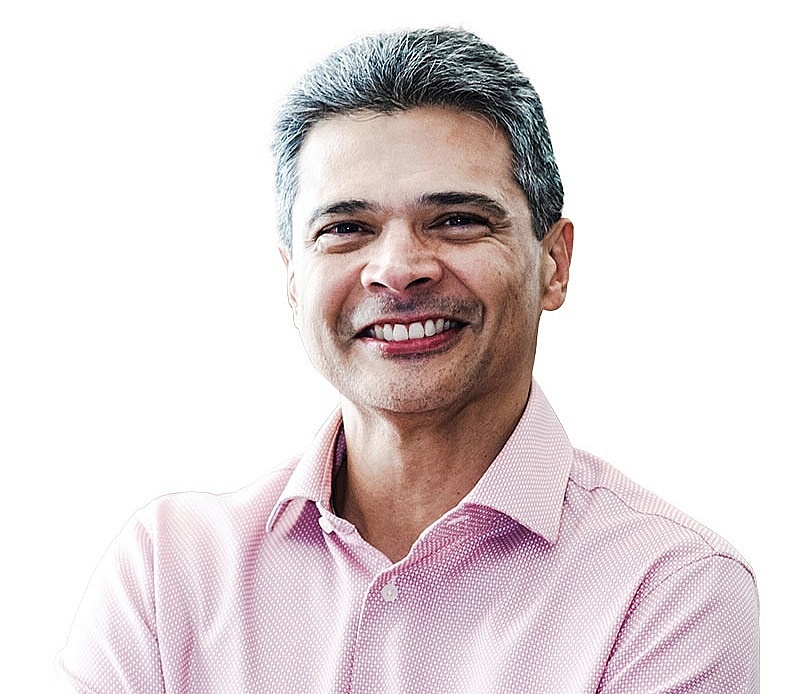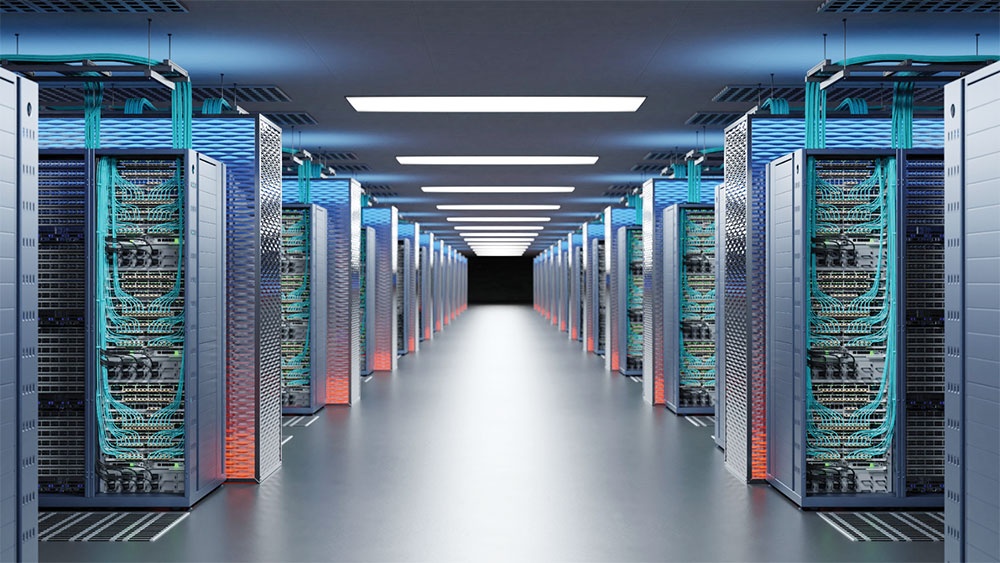Nokia laying groundwork for Vietnam’s digital economy
Our growing digital economy requires improvement in ICT infrastructure. How could Nokia's solutions help?
 |
| Nokia Vietnam general manager Rubén Moron Flores |
Nokia’s data centre fabric solutions are designed to be simple and efficient, highlighting high performance and intent-based automation. This suite of hardware and software solutions is now in its third generation. Automation is now the key focus, allowing for automatic management of hardware and boxes in the data centres using software.
It is also more user-friendly in the sense that the operating system is open, based on standard Linux OS, and it can be handled much more easily. In contrast to previous data centre providers that supplied only regular switches and routers, our solution provides more powerful hardware for increased capacity.
Our platform is presented on time with the proper capacity to meet customers’ demand, which is interoperability with 4G. We are bringing in innovative solution with more capacity, that is easy to use and efficient in power consumption. It’s critical to ensure that any solution we implement allows for backward compatibility, enabling both legacy systems as well as the modernised systems to coexist.
Additionally, we can also provide global support to enhance the overall effectiveness of the solution.
Industries have been increasingly looking for automation solutions to address the growing demand for applications like livestream videos, all of which requires data centres close to where the data is collected and consumed, and data saved close to the enterprises.
For data centres to be successful, a fast 5G deployment is important because it ensures the flexibility and scalability of these services. When 5G comes, there will be numerous requirements for operators across different enterprises.
Could you share some information about Nokia’s investment in Vietnam?
We have been investing substantially in Vietnam for more than 30 years. We work with all three major mobile operators and have been deploying 5G trials to the operators, mainly in Hanoi and Ho Chi Minh City.
In August last year, we signed a MoU with VNPT to develop private wireless networks for smart ports and airports across the country. We are also collaborating with universities to create niche cases for 5G and data centres, and developing programmes that will most likely require a data centre for 5G.
This is crucial to co-create the ecosystem for 5G and for this technology to be successful, it will need many parts to work. Data centres are one part of that, but they also need the broad ecosystem to provide knowledge and human resources, as well as enterprises to help with funding and innovative solutions in logistics, engineering, education, and many other areas.
Thanks to the exceptional remote support provided by our regional leadership team, our team in Vietnam has the ability to rapidly scale up. This support has been instrumental in facilitating our growth and success. We are participating in all different angles from radio, core, and optics to fixed broadband networks, together with Vietnam’s major mobile operators.
 |
| Successful data centres need to be simple and efficient, highlighting high performance and intent-based automation |
Will the development of 5G lead to increase cost for internet users?
With the rollout of 5G networks around the world, mobile broadband users only need to upgrade to devices that support the new frequency, with no significant increase in monthly payments. For general users, an ecosystem for devices and mobile terminals is growing to be compatible with 5G.
However, enterprises will more likely be charged if they are required to deploy a specific application depending on their needs. For example, manufacturing or logistics enterprises will probably invest in 5G to support specific applications that can use the benefits of the technology, such as enhanced mobile broadband, ultra-reliable low latency communications, and massive machine-type communications.
I believe 5G can really help to solve the problem of internet disruption for users all over the country. In many countries where internet access is not feasible because people live in remote areas or for other reasons, access to fiber internet can be replaced by 5G with the same quality. Nokia has supported our partners to deploy 5G fixed wireless access services successfully in the US and Australia, for example, and can easily replicate it in Vietnam.
Amendments to telecommunication legislation are expected to be approved by the National Assembly by the end of this year. How would this benefit businesses in Vietnam?
This is a superb opportunity for data centres and different providers in Vietnam to increase their market share. The data centre market in Vietnam is growing with the presence of prominent global players, which include Amazon Web Services, Google Cloud, and Microsoft, and local providers such as Viettel IDC, VNPT, CMC Telecom, and FPT Telecom.
Many data centres traditionally consume a lot of electricity. How could Nokia provide a more sustainable solution for them?
One of our main focus areas as emphasised by our CEO is to make power consumption the most efficient. By 2030, we aim to reduce half of our carbon emissions, so that’s at the centre of everything we do. The targets include our own operations, products in use, logistics, and final assembly supplier factories. Nokia is also part of ARPA-E (Advanced Research Projects Agency-Energy) in the US and we are working together with the University of Illinois to develop a new data centre cooling system.
The two biggest electricity consumption sources in data centres are the power needed to enable the hardware itself, and the power used to cool down all the equipment. The hardware that is part of Nokia fabric solutions coming to the market will contribute to reducing electricity consumption. It is also recommended that energy used to power data centres should come from renewable sources such as wind or solar to align with the fights against climate change.
Nearby, data centres in Singapore have generated hundreds of millions of US dollars value for the economy in a year. What are your suggestions for their development in Vietnam?
Vietnam and Singapore share many similarities, including their geographic proximity to one another. Furthermore, both governments have set forth very ambitious plans for advancing the country’s digital transformation.
For example, data centres have grown very fast in Singapore, but something that we can also learn from the fast growth in data capacity is the growth in power consumption. Power generated in Singapore mainly derives from oil and gas, which underscores the urgent need for the country to prioritise sustainable energy alternatives.
Data centres in Singapore account for about 7 per cent of total electricity consumption. At the same time, as data continues to grow exponentially and the need for faster and more powerful computing needs increases, these figures are expected to rise in the future as well, without proactive steps to reduce data centres’ energy consumption.
This highlights the pressing need for the government to prioritise the development of renewable energy. By doing so, they can support the development of data centres in this country.
 | Accelerating digital transformation in Vietnam and the road to 5G Vietnam is on a steady trajectory towards the digital age. The government has spared no effort in recent years to accelerate national digital transformation based on three key pillars: digital government, digital economy, and digital society. |
What the stars mean:
★ Poor ★ ★ Promising ★★★ Good ★★★★ Very good ★★★★★ Exceptional
Themes: Digital Transformation
Related Contents
Latest News
More News
- The next leap in Cloud AI (December 11, 2025 | 18:19)
- How AWS is powering the next-gen data era (December 09, 2025 | 13:14)
- Outlook in M&A solid for Singapore (December 08, 2025 | 10:31)
- Vietnamese firms are resetting their strategy for global markets (December 05, 2025 | 17:04)
- LPBank Securities accelerates AI and data innovation with AWS (December 05, 2025 | 09:00)
- Improving traceability capacity with Zebra Technologies (November 26, 2025 | 10:08)
- Ho Chi Minh City engages 500 CEOs in dialogue on building global megacity (November 25, 2025 | 16:00)
- CEO shares insights on Phu My 3 IP’s journey to green industrial growth (November 17, 2025 | 11:53)
- NS BlueScope CEO highlights decade of sustainable steel efforts (November 15, 2025 | 10:00)
- SCG maintains strong cash flow and drives low-carbon growth in Q3 (November 07, 2025 | 09:53)

 Tag:
Tag:

















 Mobile Version
Mobile Version